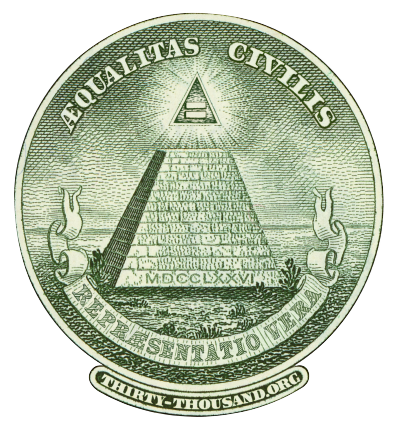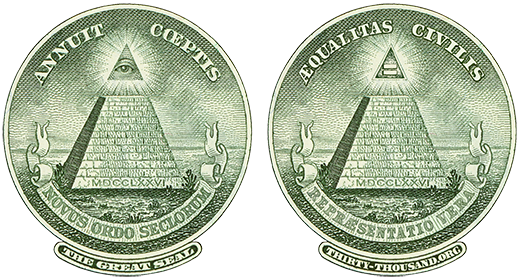SUPPLEMENTAL CONTENT
The Authorship of Federalist 55
Various stylometric analyses reveal that Federalist 55 and several other “disputed” essays were actually coauthored by Hamilton and Madison.
DRAFT FOR COMMENT POSTED ON March 24, 2024.
In 1787 and 1788, 85 “Federalist Papers” were published anonymously under the pseudonym “Publius”. The purpose of these essays was to explain the proposed constitution and advocate for its ratification without modification. Though Alexander Hamilton, James Madison and John Jay later asserted authorship of various of those essays, the authorship of twelve of them are disputed.1The disputed papers are Nos. 49-58, 62, and 63
This dispute began with conflicting claims made by Madison and Hamilton. The assertions of Hamilton’s authorship were made by a third party who claimed to have received that information directly from Hamilton shortly before his untimely death. To the extent that this third-party account was valid, it seems very unlikely that either Hamilton or Madison would have deliberately lied about their authorship. Conflicting claims regarding which man authored the disputed essays were also made by some of their contemporaries based on their own perceptions or recollections. Subsequent historical analyses of the disputed essays in the 1800s reached inconsistent conclusions about the likelihood of who authored which essay.
In the 20th century, a variety of sophisticated analytical methods were developed for determining the probability of authorship of disputed literary works. These methods, known as “stylometry”, employ statistical methods to analyze the texts’ linguistic styles. And, as it turns out, the disputed Federalist Papers have long been a favorite test subject for various stylometric analytical methods.
Stylometric analysis of the disputed Federalist Papers begins by examining the linguistic styles of works known to have been separately written by Madison and Hamilton in order to create analytical baselines. These stylometric analyses are complicated by the fact that Madison and Hamilton shared similar writing styles and political views in many respects. Despite that, it is possible to calculate probabilities as to who was more likely to have authored which essays.
The disputed essays include 55 through 58, which are the ones most relevant to the debates that occurred during many of the constitutional conventions, and during the first Congress, relative to what the appropriate size of the House of Representatives should be. Those debates provide essential context to the development of the very first constitutional amendment proposed for the Bill of Rights, Article the first (which was never ratified). However, it is Federalist 55 which is of particular interest due to that fact that it was the most explicit in contemplating a much larger House of Representatives, as well as providing projections for a 50-year timeframe.
The Mosteller-Wallace Analyses
The best-known and most influential stylometric analysis of the Federalist Papers was conducted in the early 1960s by two American statisticians, Frederick Mosteller and David Wallace. Their book2Mosteller, F. and D. L. Wallace. Inference and Disputed Authorship: The Federalist. Reading, MA., 1964; which was republished 20 years later as Applied Bayesian and classical inference : the case of the Federalist papers. Springer-Verlag, New York, 1984. includes several different analyses of the various Federalist Papers. Unfortunately, due to its dense technical and highly mathematical exposition, it is generally incomprehensible to the vast majority of the population. The purpose of this section is to render their work more comprehensible as it relates to the subject at hand.
Main Analysis (chapters 3 & 4)
Their primary analysis, known simply as the “Main Analysis”, uses Bayesian analytical methods to build a positive statistical model that estimates the probability of whether Madison or Hamilton authored each of the disputed Federalist papers. Their Main Analysis examined the following groups of essays:
- Essays known to have been solely written by Madison.
- Essays known to have been solely written by Hamilton.
- Three essays known to have been jointly written by both men.
- Twelve disputed essays.
With respect to their Main Analysis, it is important to understand that an inherent limitation of the Bayesian methodology is that it examines the data from the perspective that all the papers listed above were written either by Madison or by Hamilton. Consequently, their either-or analysis is not able to explicitly calculate the probability of these essays having been jointly written; however, as we shall see, it does so implicitly.
In order to understand their calculations, the results of the Main Study, relative to its six data sets, have been translated into odds as summarized in the table below. For example, relative to data set “A”, the odds that Federalist 55 was written by Madison is 330:1. Though those odds seem high when taken at face value, that is quite misleading (as explained below).
As explained in their book, and indicated in the following table, six different data sets were used as the basis for the Main Analysis. Note that the odds are relatively consistent across all six data sets (horizontally).
| Data Set | ||||||
|---|---|---|---|---|---|---|
| A | B | C | D | E | F | |
| Arithmetical Odds that Essay Written Solely by Madison (X:1) | ||||||
| Federalist 55 | 330 | 245 | 365 | 493 | 602 | 446 |
| Federalist 56 | 6,003 | 3,641 | 6,634 | 14,765 | 19,930 | 8,103 |
| Joint Paper Odds | 10,233 | 10,579 | 1,385 | 8,662 | 9,259 | 13,360 |
| Disputed Paper Odds | 3,188,305 | 1,583,265 | 2,401,650 | 10,324,187 | 28,535,705 | 5,526,139 |
| Madison Authored Odds | 11,640,489 | 5,520,616 | 31,015,573 | 150,364,278 | 889,348,740 | 56,063,750 |
See endnote for an explanation of how this table was developed.
Because this was an either-or analysis, the results can be somewhat confusing if they are not viewed in context: Essays which are known to have been jointly authored appear to have a seemingly high odds of being authored solely by Madison. For example, as indicated in the table above, the average odds that the jointly written papers were exclusively authored by Madison are 10,233:1 for data set “A”. However, we know that those papers were indeed jointly authored. In order to understand how to interpret those results, they must be understood on a relative basis, by comparing them to the odds for the other essays.
As would be expected, the odds that the essays known to have been written by Madison, were indeed written by Madison, are astronomically high, as indicated in the bottom row of the table above. For example, for data set “A” the odds are over 11 million to one that they were written by Madison. And, of course, the essays that were known to have been written by Hamilton have similarly high odds of having been written by Hamilton (not shown in the table).
With that in mind, what are the odds that the known jointly written essays were solely written by which man? As indicated in the table above, those odds range from 1,385:1 to 13,360:1 that they were written by Madison. Of course, in normal parlance, those are extremely high odds; however, it is important to recognize that they are minuscule relative to the calculated odds that the known Madison papers were written by Madison. Nonetheless, it is easy to understand why they are nominally high because, in fact, Madison did indeed coauthor those essays. Because the Bayesian probability analysis is binary, it is forced to dichotomize between one of the two authors, and it chose Madison with relatively small odds. Based on this, it is reasonable to suppose that Madison’s influence over some of the jointly written papers may have been greater than Hamilton’s.
Next, let’s turn our attention to the disputed papers, starting with Federalist 55. According to the Main Analysis, the probability that #55 was written solely by Madison is in the range of 245:1 to 602:1. Taken alone, those seem to be very high odds; however, they are significantly lower than those same odds relative to the known jointly written papers! Therefore, it is reasonable to conclude that #55 was jointly written as well. As a point of reference, note also that the odds that No. 56 was written solely by Madison is also generally lower than those odds for the jointly authored papers.
By analogy, we argue to “zero the scale” by calibrating it against the jointly written papers, by recognizing that their relatively low Madison odds are indicative of their joint authorship. Therefore, because the Madison odds for Federalist 55 are lower than for the jointly authored essays, it can be safely concluded that #55 was coauthored by Hamilton and Madison. In fact, because the Madison odds for Federalist 55 are so much lower than for the jointly written paper, it is very likely that it contains even more “Hamilton” than do the jointly written papers.
This same reasoning could be extended to many of the remaining disputed papers. As shown in the table above, though their average odds of being authored solely by Madison are nominally quite high (ranging in the few millions to one), they are significantly lower than those of the known Madison papers (with some much lower than others). Given that, it is reasonable to speculate that many of the disputed papers could have originally been drafted by Hamilton, and then heavily revised by Madison. (Alternatively, it could be argued that they were originally drafted by Madison, then lightly revised by Hamilton, but it seems less likely that Hamilton would have had such a light touch on all of the disputed papers.)
Not surprisingly, in the book’s conclusion, Federalist 55 is singled out as having the lowest probability of having been authored by Madison:
“On the basis of our data alone, Madison is extremely likely, in the sense of degree of belief, to have written all of the disputed Federalists: Nos. 49 through 58 and 62 and 63, with the possible exception of No. 55. For No. 55. our evidence is relatively weak because suitably deflated odds are about 90 to 1 in favor of Madison. Such conservatism needs explanation. We say weak because a reasonable person with strong initial convictions in favor of Hamilton would not find these odds overwhelming. For people who slightly favor Hamilton’s authorship, or favor Madison’s, these odds are strong. By contrast, though, No. 56 has the next weakest odds at of about 800 to 1 for Madison, and we do not regard these as weak. For the remaining [disputed] papers, the data strongly favor Madison, including the two papers that the historians feel least settled about, Nos. 62 and 63.”
The conclusion quoted above reveals how the Main Analysis is trapped inside an either-or paradigm relative to determining authorship of the various essays. There is no explicit recognition of the statistical likelihood of joint authorship, even when that reality is presented relative to the known joint papers, which effectively provide an indisputable statistical baseline relative to establishing joint authorship.
Weight-Rate analysis (chapter 5)
The weight-rate analysis uses a “classical discrimination analysis” which constructs a probability distribution using a weighted sum of word frequencies. This analysis largely parallels the Main Analysis in that it concludes that most of the disputed papers were highly likely to have been written by Madison, with the weakest odds for Nos. 55 & 56, which are as follows:
| Paper | Lower Confidence Interval | Upper Confidence Interval | |
|---|---|---|---|
| Disputed | 55 | Madison 18:1 | Hamilton: 1,096:1 |
| Disputed | 56 | Madison 8,100:1 | Hamilton 2:1 |
| Joint | 18 | Madison 12,088:1 | Hamilton 1:1 |
| Joint | 19 | Madison 268,337:1 | Madison 4:1 |
| Joint | 20 | Madison 90:1 | Hamilton 148:1 |
(The odds in the table above are calculated from table 5.5-3 by using the indicated log likelihood ratio as an exponent for the base of the natural log e.)
Note that the odds that those two disputed papers were written by Madison are generally lower than those of the three jointly authored papers, which is consistent with the Main Analysis.
Robust Hand-Calculated Bayesian Analysis (chapter 6)
This refers to a Bayesian analysis using inputs that are of nearly equal word length to facilitate calculation done by hand using slide rules. This was similar in technique to the Main Analysis, but less discriminating.
The results for all disputed papers mirror the Main Analysis. The exception again is Federalist 55, where the odds are 10:1 in favor of Hamilton.
Three-Category Analysis
This is a conventional statistical analysis based on word groupings into three frequency categories: low, middle, high. These groupings are used to determine probabilities for each category, and these probabilities are used to analyze the disputed papers.
The results are similar to the other studies. All the disputed papers are calculated to be strongly Madisonian with the exception of No. 55, with log odds of -5.0. Federalist 55 is “so close to the cutting point that it is difficult to judge. The score next closest to the cutting point is -7.8, for one of the joint-authorship papers, no. 20”.
The Holmes-Forsyth Analyses (Genetic Algorithm)
One of the analyses used by Holmes & Wallace3The Federalist Revisited: New Directions in Authorship Attribution. D. I. Holmes and R. S. Forsyth. Department of Mathematical Sciences, University of the West of England, Bristol, UK. Literary and Linguistic Computing, Vol. 10, No. 2, 1995. Oxford University Press. was a “genetic algorithm” that uses a machine-learning package based on computer-assisted pattern recognition a to seek relational expressions characterizing authorial styles.
When the analysis was done with 30 marker words, none of the 12 disputed papers are more Hamilton than Madison. However, and significantly, when the analysis is done with 49 marker words, essays 55 & 63 are more Hamilton than Madison. As explained in their study:
The genetic rule-finder method was able to use all eighty-five papers, sixty-nine for training and sixteen as test cases. Given the prevailing opinion that Madison is the true author of all twelve Disputed papers, the rule-sets generated and then employed on the thirty marker words performed ‘better’ than the rule-sets using the forty-nine-word set, a reverse finding to that above. In the first case, none of the twelve were more Hamiltonian than Madisonian, whilst in the second case two papers (numbers 55 and 63) fell into that category. Considering that only eight marker words were ultimately employed from the thirty words available in the first of these cases, the result was most encouraging.
The Miranda-García & Calle-Martín Analysis
This analysis measured the difference between two texts by assessing numerical differences in word frequency. Their conclusion is that all the disputed papers can be assigned to Madison with exception of 55, which is more Hamiltonian. These values are shown in Table 8, and illustrated in Figures 3 and 4, of their report.4Testing Delta on the Disputed Federalist Papers. Antonio Miranda-García & Javier Calle-Martín. Universidad de Málaga. 2011.
Conclusion
The above-referenced styolometric analyses provide compelling evidence that Federalist 55, as well as several of the other disputed essays, were jointly authored by Hamilton and Madison. The fact that these analyses corroborate one another, especially with respect to Federalist 55, should be viewed as conclusive. Moreover, the analyses indicate that Federalist 55, in particular, because of its relatively weak Madison odds, is therefore more strongly weighted towards Hamilton, indicating that he had a significant role in its authorship.
Acknowledgement goes to Zachariah Zibrat for his indispensable assistance with interpreting and explaining the nearly impenetrable analyses referenced in this summary.
In the table below, the “Average of Total Natural Log Odds” are calculated from the data provided by tables 3.4-1 and 3.4-2 (in the book) by taking the simple average of the natural log odds across each of the categories (i.e., joint papers, disputed papers, and known Madison papers).
Note that the alpha Data Set used in this paper (A through E) is just a representation of the negative binomial sets that were referenced in the book which specified the set of underlying constraints (i.e., 22, 33, 38, 21, 11, 31) in tables 3.4-1 and 3.4-2 therein.
Next, the “Arithmetical Odds that Essay Written Solely by Madison” are then calculated. This is done by raising the value “e” to the power of the absolute value of the natural log, where e is “Euler’s number”, an irrational number which is the base for natural logarithms.
The odds and are in the form of X:1. For example, the average odds that the jointly written papers were exclusively authored by Madison is 10,233:1 for data set “A” (i.e., set 22).
| Data Set | ||||||
|---|---|---|---|---|---|---|
| A | B | C | D | E | F | |
| Negative binomial set of underlying constants | ||||||
| 22 | 33 | 38 | 21 | 11 | 31 | |
| Average of Total Natural Log Odds (calculated from Mosteller tables 3.4-1 and 3.4-2) | ||||||
| Joint Papers | -9.2 | -9.3 | -7.2 | -9.1 | -9.1 | -9.5 |
| Disputed Papers | -15.0 | -14.3 | -14.7 | -16.2 | -17.2 | -15.5 |
| Known Madison papers | -16.3 | -15.5 | -17.3 | -18.8 | -20.6 | -17.8 |
| Arithmetical Odds that Essay Written Solely by Madison (X:1) | ||||||
| Federalist 55 | 330 | 245 | 365 | 493 | 602 | 446 |
| Federalist 56 | 6,003 | 3,641 | 6,634 | 14,765 | 19,930 | 8,103 |
| Joint Paper Odds | 10,233 | 10,579 | 1,385 | 8,662 | 9,259 | 13,360 |
| Disputed Paper Odds | 3,188,305 | 1,583,265 | 2,401,650 | 10,324,187 | 28,535,705 | 5,526,139 |
| Madison Authored Odds | 11,640,489 | 5,520,616 | 31,015,573 | 150,364,278 | 889,348,740 | 56,063,750 |
© Thirty-Thousand.org March 24, 2024 (last updated on 03/31/2024)
- 1The disputed papers are Nos. 49-58, 62, and 63
- 2Mosteller, F. and D. L. Wallace. Inference and Disputed Authorship: The Federalist. Reading, MA., 1964; which was republished 20 years later as Applied Bayesian and classical inference : the case of the Federalist papers. Springer-Verlag, New York, 1984.
- 3The Federalist Revisited: New Directions in Authorship Attribution. D. I. Holmes and R. S. Forsyth. Department of Mathematical Sciences, University of the West of England, Bristol, UK. Literary and Linguistic Computing, Vol. 10, No. 2, 1995. Oxford University Press.
- 4Testing Delta on the Disputed Federalist Papers. Antonio Miranda-García & Javier Calle-Martín. Universidad de Málaga. 2011.





